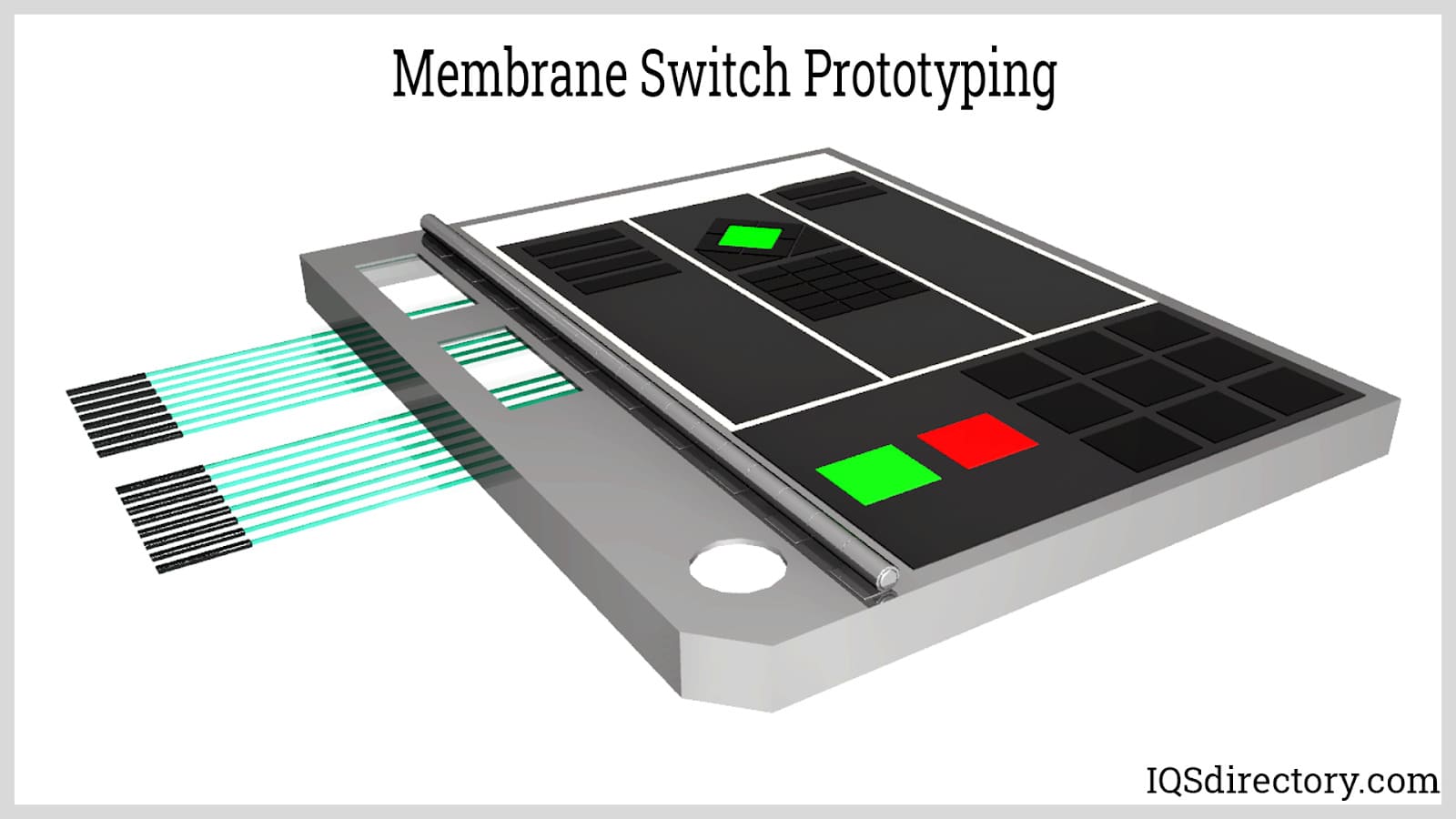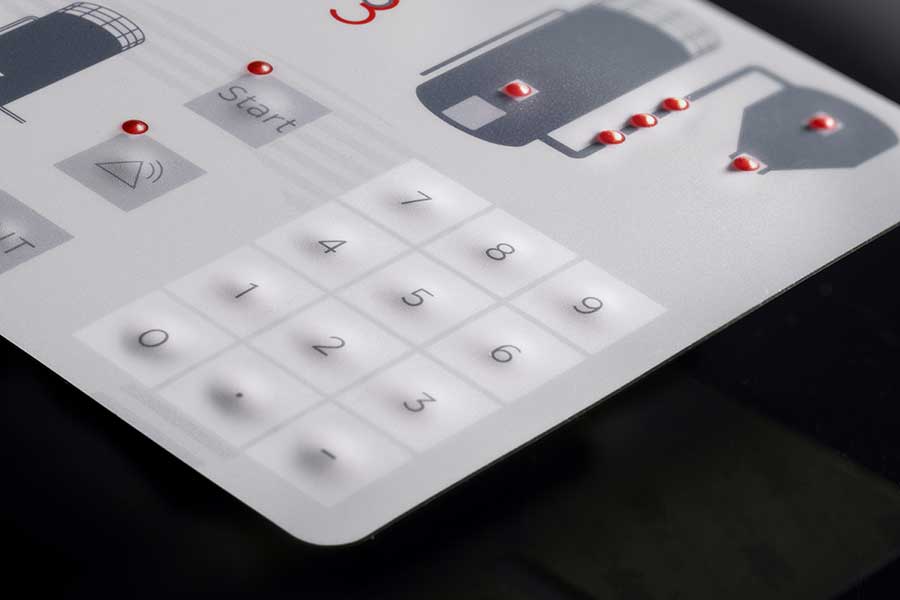Discover Exactly How Membrane Switches Function and Their Role in Modern Electronics
Membrane Switches stand for a sophisticated integration of modern technology and layout within the world of contemporary electronic devices, working as crucial interfaces in various devices. Consisted of numerous layers, these buttons make use of pressure-sensitive systems to promote individual interaction. Their applications span different industries, from customer electronics to clinical tools, highlighting their flexibility and value. Recognizing the complexities of Membrane button capability and their more comprehensive implications in improving user experience welcomes additional expedition into their style, benefits, and the ingenious developments shaping their future in modern technology.
What Are Membrane Switches?

Membrane switches are identified by their durability and resistance to ecological variables, such as dirt, wetness, and extreme temperature levels. They can be personalized with different graphics, colors, and responsive feedback alternatives, boosting user experience while preserving aesthetic appeal - membrane switches. Furthermore, the incorporation of published circuits allows for smooth integration into tools, enhancing general performance.
The convenience of Membrane buttons appears in their capability to support both complex and straightforward control features. They can incorporate features such as LED indications and touch-sensitive innovation, providing to details individual needs. As innovation remains to advance, Membrane Switches continue to be crucial for allowing instinctive and effective interface, thereby playing an essential duty in the improvement of contemporary electronic devices.
Components of Membrane Switches
Membrane switches are made up of numerous crucial elements that interact to create a trusted and practical user interface. The main aspects consist of the graphic overlay, glue layer, spacer layer, and conductive traces.
The visuals overlay functions as the user interface, commonly printed on a versatile substrate such as polyester or polycarbonate. This layer not just supplies aesthetic appeal yet also consists of tactile feedback, aesthetic hints, and safety attributes. Underneath the graphic overlay exists the adhesive layer, which safeguards the button to the device and makes sure longevity versus environmental stresses.
The spacer layer is crucial for keeping the essential gap between the visuals overlay and the circuit layer. This gap enables the activation of the switch when pressure is applied. The conductive traces, generally made from silver or carbon, create the electric pathways that complete the circuit when the switch is engaged.
In addition, a support layer may be consisted of for architectural assistance and insulation. These components team up perfectly, ensuring that Membrane switches are both durable and user-friendly, making them vital in numerous contemporary electronic applications.
Just How Membrane Switches Job
Exactly how do Membrane Switches function effectively within digital devices? Membrane Switches run on the principles of pressure-sensitive innovation, utilizing a split construction that includes graphic overlays, glue layers, and conductive aspects.
The layout of Membrane switches is crucial for their efficient operation (membrane switches). The layers are meticulously crafted to provide responsive feedback, toughness, and resistance to environmental elements such as dampness and dirt. The addition of domes-- tiny, raised locations within the button-- enhances tactile reaction, supplying users with a visible click feeling upon activation
Additionally, Membrane buttons can be personalized in terms of dimension, shape, and graphics, making them suitable for different applications. They are frequently made use of in control panels, clinical devices, and consumer electronics as a result of their sleek layout and integrity. In general, the effective performance of Membrane buttons is pivotal in enhancing user communication and ensuring seamless procedure in modern-day digital gadgets.

Applications in Modern Devices
Using their special layout and capability, Membrane buttons have ended up being essential parts in a wide array of contemporary electronic devices. These functional user interfaces are employed in customer electronics, industrial tools, clinical gadgets, and click to read automotive controls, providing seamless individual interaction.
In customer electronic devices, Membrane switches are commonly found in home appliances like microwaves, washing makers, and various other family tools, where they allow instinctive control with a sleek profile. Their low-profile style promotes assimilation right into compact gadgets, boosting aesthetic charm without endangering performance.
In commercial applications, Membrane Switches work as control panels for machinery, using longevity and important site resistance to severe atmospheres. Their capacity to stand up to wetness and contaminants makes them perfect for usage in production and handling sectors.
Clinical tools also take advantage of Membrane switches, which are created to be easy to clean and keep, making sure hygiene in medical setups. They are typically used in diagnostic tools, patient tracking systems, and mobile medical tools, where dependability is paramount.
Advantages of Membrane Buttons
One of the essential advantages of Membrane switches is their flexibility, which allows them to be customized for a variety of applications throughout several industries. These switches can be made in different forms and dimensions, fitting unique product requirements while giving smooth integration right into devices. Their slim profile allows a smooth and compact layout, commonly enhancing the aesthetic allure of electronic items.
An additional significant advantage is their resilience - membrane switches. Membrane buttons are usually immune to dirt, moisture, and chemicals, making them suitable for harsh atmospheres. This strength extends their life expectancy contrasted to typical mechanical switches, decreasing the demand for constant replacements
Furthermore, Membrane Switches offer cost-effectiveness. The manufacturing procedure entails printing technologies that lessen manufacturing prices, particularly for large runs. This cost, integrated with reduced upkeep needs, makes them an attractive option for producers.

Final Thought
In verdict, Membrane Switches represent a considerable advancement in user interface modern technology within contemporary electronics. As the demand for intuitive and resistant user interfaces continues to expand, the function of Membrane buttons in shaping customer experience will most certainly broaden.
Membrane Switches represent an innovative combination of technology and layout within the realm of view it modern-day electronics, offering as vital user interfaces in many devices.In the world of modern electronics, Membrane Switches serve as critical elements that facilitate individual communication with gadgets. As modern technology continues to advance, Membrane Switches continue to be important for making it possible for reliable and user-friendly customer interfaces, thereby playing an essential duty in the development of contemporary digital gadgets.
Just how do Membrane Switches function efficiently within digital gadgets? Overall, the efficient functioning of Membrane buttons is critical in improving individual interaction and guaranteeing smooth operation in modern-day digital devices.
Comments on “Exploring the Future of Membrane Switches in Emerging Technologies”